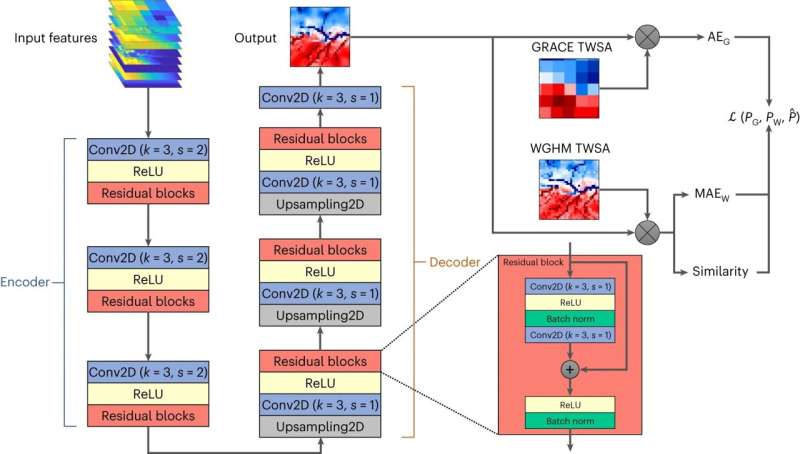The structure of the designed deep learning model in this study with an enlarged structure of the used residual blocks. The 2D convolutional layers and upsampling layers with bilinear interpolation are denoted by Conv2D and Upsampling2D. The kernel size of the 2D convolutional layers is denoted by k, whereas the stride is denoted by s. The input features go through the encoder–decoder structure to generate the predictions with the same size, which will be compared to the GRACE and WGHM TWSAs to compute the loss function. Therefore, the optimizing process is self-supervised. Credit: Nature Water (2024). DOI: 10.1038/s44221-024-00194-w
In their recent publication in Nature Water, D-BAUG researchers Junyang Gou and Professor Benedikt Soja introduced a finely resolved model of terrestrial water storage using a novel deep learning approach.
By integrating satellite observations with hydrological models, their method achieves remarkable accuracy even in smaller basins.
This model promises significant benefits across various domains, including hydrology, climate science, sustainable water management, and hazard prediction.
More information: Junyang Gou et al, Global high-resolution total water storage anomalies from self-supervised data assimilation using deep learning algorithms, Nature Water (2024). DOI: 10.1038/s44221-024-00194-w
Coomentary: Alexander Sun, Learning to downscale satellite gravimetry data through artificial intelligence, Nature Water (2024). DOI: 10.1038/s44221-024-00199-5
Journal information: Nature Water
Provided by ETH Zurich
























